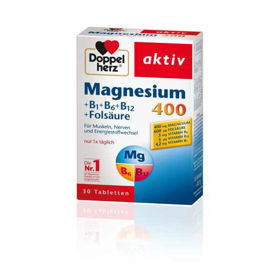
Folic acid (lat. Acidum folicum) or vitamin B 9 belongs to the group of B-complex vitamins. It is important for DNA synthesis and conversions about certain amino acids. Deficiency can lead to megaloblastic anemia. It is given orally in folate deficiency and also plays a role in preventing neural tube defects in newborns. Folic acid should not be used as monotherapy for the treatment of unidentified megaloblastic anemia, as it alleviates the symptoms of anemia, while neurological damage caused by primary B deficiency 12 , worsen.
History of folic acid
The discovery of folic acid is linked to Wills and colleagues who researched the causes and treatment options for macrocytic anemia in women in India. In 1937, it was found that the raw liver extract contained a substance that cures pernicious anemia. This substance was first named Will's substance, later a vitamin, and today is known as folic acid. In 1941, Mitchell and colleagues isolated folic acid from pinache leaves. Because it is found in the green leaves (lat. Folium) of vegetables, it has been given the name folic acid.
Chemical structure of folic acid and properties
Folic acid (pteroylglutamic acid) consists of three components: 2-amino-4-hydroxypteridine nucleus, p-aminobenzoic acid and L - (+) - glutamic acid. The pteridine ring is linked to the PABA by a methylene bridge, which in turn is linked to glutamic acid by an amide bond. The structure is as follows:

Folic Acid
It is an orange-yellow crystalline powder, sparingly soluble in water and organic solvents. It is almost insoluble in alcohol and acetone. It is hydrolyzed under the influence of acids, decomposes under the influence of oxidizing and reducing agents and UV light. It decomposes during prolonged food preparation and at elevated temperatures.
Natural sources of folic acid
Most folic acid is found in the liver, kidneys, green vegetables, yeast and nuts. In natural sources it is found in the form of polyglutamate.
The fate of folic acid in the body
Folate is found in food mostly in the form of reduced polyglutamates. Absorption is mediated by enzymes located in cell membranes in the mucous membranes of the duodenum (gamma-glutamylcarboxypeptidase) and jejunum (dihydrofolate reductase). No folate from food is an active coenzyme for intracellular metabolism.
Already during absorption, metabolic changes occur in which active forms are formed. Polyglutamates are hydrolyzed to monoglutamate and then reduced with the participation of ascorbic acid to tetrahydrofolic acid, which is a coenzyme for C transfer 1 -units required for DNA synthesis. When folate is absorbed, it is rapidly transferred to virtually all tissues and binds to proteins. In general, folate distribution is good, with active and passive transport. Larger amounts are stored mostly in the liver, less also in other tissues. Folate is excreted in urine and faeces. 4 to 5 ug of folate is excreted in the urine daily. Elimination is greater if higher doses are administered.
Physiological role of folic acid
Tetrahydrofolic acid is important for nucleic acid synthesis and maintenance of normal entropoesis. In some types of megaloblastic anemia, folic acid promotes the production of erythrocytes, leukocytes and platelets. The same acid is important in the metabolism of the amino acids glycine, methionine and histidine. Accordingly, it is involved in the conversion of homocysteine to methionine, serine to glycine, in the synthesis of thymine from uracil (a step in DNA synthesis) and in the metabolism of histidine (degradation of histidine to glutamic acid).
Hypovitaminosis
If folate stores are relatively small and daily needs are high, folic acid deficiency and consequent megaloblastic anemia may develop 1 to 6 months after cessation of folic acid intake.
Folic acid deficiency (more common in alcoholics and people with liver disease) can be caused by a low-folate diet and a reduction in the amount of folate accumulated in the liver, as well as by interference with folate resorption and metabolism. Deficiency may also be due to chronic hemodialysis, gastrectomy, hemolytic anemia, and malabsorption syndrome.
Recommended daily amounts of folic acid
The recommended daily allowances (RDAs) for adult healthy women or men are 150 to 200 ug of folate.
In 1998, the American Food and Nutrition Board adopted a correction of these values, which now amount to 400 ug / day for adult women and men. 500 to 700 ug of folate is ingested daily with food, of which 50 to 200 ug is resorbed, depending on metabolic needs.
Pregnant women have an increased need for folic acid (300 to 400 ug / day according to RDA values, according to the Food and Nutrition Board 600 ug / day). Statistics from research in the US show that approximately 2,500 newborns are born each year with a clinical picture of one form of spina bifida resulting from improper neural tube closure. This injury causes paralysis and, in very severe cases, developmental delay. Therapy that involves additional amounts of folic acid just before conception or in early pregnancy can reduce or prevent this condition.
Epidemiological studies have shown that a daily intake of 400 to 800 ug of folic acid during this period can reduce the incidence of this injury by 50 to 72 percent. The mechanism of action of folic acid in preventing neural tube defects is not yet known, although many scientific studies have led to a number of theories.
Folic acid is most commonly used orally in tablet form. Parenteral administration (intramuscular, intravenous and subcutaneous) is rarely required, usually in patients with malabsorption syndrome.
Folic acid is used in the prevention and treatment of its deficiency. Increased needs are manifested in the following diseases or conditions:
•pregnancy,
•breastfeeding,
•alcoholism,
•hemolytic anemia,
•chronic fever,
•gastrectomy,
•chronic hemodialysis,
•intestinal diseases,
•malabsorption syndromes.
Folic acid should not be used to treat anemia until the diagnosis of pernicious anemia (improvement of haematological manifestations, worsening of neurological ones) has been ruled out. It is also not effective in preventing mental disorders.

Image: Recommended daily amounts according to age and situation in individual countries of the world

Image: Daily required amounts of food for a healthy adult to ensure that the recommended daily amount is achieved.
Folic acid interactions
Analgesics (with long-term use), carbamazepine, estrogens, oral contraceptives
These medicines may reduce the absorption of folic acid, so the need for folic acid may be increased in patients taking these medicines.
Anticonvulsants (hydantoin)
Concomitant use with folic acid may reduce the anticonvulsant action of hydantoin by antagonizing its action on the central nervous system. The dose of hydantoin should be increased in patients receiving folic acid as a dietary supplement.
Aluminum or magnesium based antacids
They can interfere with the microbiological method of determining the concentration of folic acid in serum and erythrocytes.
Cholestyramine
It interferes with the absorption of folic acid. It is recommended that patients taking cholestyramine for a long time take folic acid at least 1 hour before or 4 hours after cholestyramine.
Methotrexate, pyrimethamine, triamterene, trimethoprim
They act as folate antagonists because they inhibit dihydrofolate reductase, especially when it comes to high doses and long-term use. Patients receiving these medicines should take leucovorin calcium instead of folic acid.
Sulfonamides (including sulphosalazine)
They inhibit folate absorption. Increased amounts of folic acid are recommended in patients receiving sulfasalazine.
Chloramphenicol
Antagonism in the hematopoietic response of folic acid. Although the significance and mechanism of this reaction are unknown, the haematological response of folic acid in patients taking both drugs should be closely monitored.
Laboratory tests
Tetracyclines and similar antimicrobial drugs
Falsely reduced serum and erythrocyte folic acid levels may occur in patients receiving these medicinal products if the determination is performed using the Lactobacillus casei method.
Consequences of folic acid deficiency in pregnancy
Congenital neural tube defects
Congenital anomalies of the neural tube include abnormalities of brain tissue, spinal cord and their protective coatings.
The neural tube develops along the dorsal part of the fetus by the third week of pregnancy. From it develops the central nervous system, which consists of the brain and spinal cord with envelopes. The most common defect in neural tube development is spina bifida, where the vertebrae, spinal cord, and its envelopes are affected. The degree of damage can range from a barely visible indentation in the skin, hair loss at the base of the spine, or minor vertebral irregularities to a fully open spinal canal with exposed spinal cord and its envelopes. Rarely, the brain or skull is affected. Congenital neural tube defects are more common in some families, indicating genetic conditioning.
Since it was discovered in 1992 that taking folic acid before conception or in early pregnancy protects against the development of congenital neural tube defects, spina bifida has become less common.
What are the symptoms?
When the degree of damage is small and without obvious signs, the abnormality can be expressed only later with back pain. With major defects, the symptoms appear as early as childhood:
•a dent in the skin or a hairy pigmented mark on the root of the spine,
•paralysis or weakness of the legs,
•decreased sensitivity in the legs,
•difficulty draining water or sludge.
Children with a severe form of congenital neural tube defects may also have hydrocephalus.
When to see a doctor?
If you are concerned that your child has difficulty moving his legs or draining water and stool, consult a doctor.
How do we treat them?
The degree of failure can be determined by ET or MR imaging. If it is milder, treatment is sometimes not necessary at all. In the case of a severe damage that threatens the functioning of the nervous system, surgery will probably be necessary in the first days of life. Despite surgical treatment, some children with severe congenital anomalies will remain disabled. Patients and their parents need the help of a physiotherapist, occupational therapist, social worker. special educators and support groups for parents of children with similar disorders.
What can we do?
The possibility of neural tube defects can be reduced if you take folic acid tablets (usually around 400 micrograms a day) during early pregnancy (the first three months) and preferably before pregnancy. If you have already had a child with spina bifida, your doctor may recommend a higher dose.
source: Vitamins and minerals, truths and prejudices











